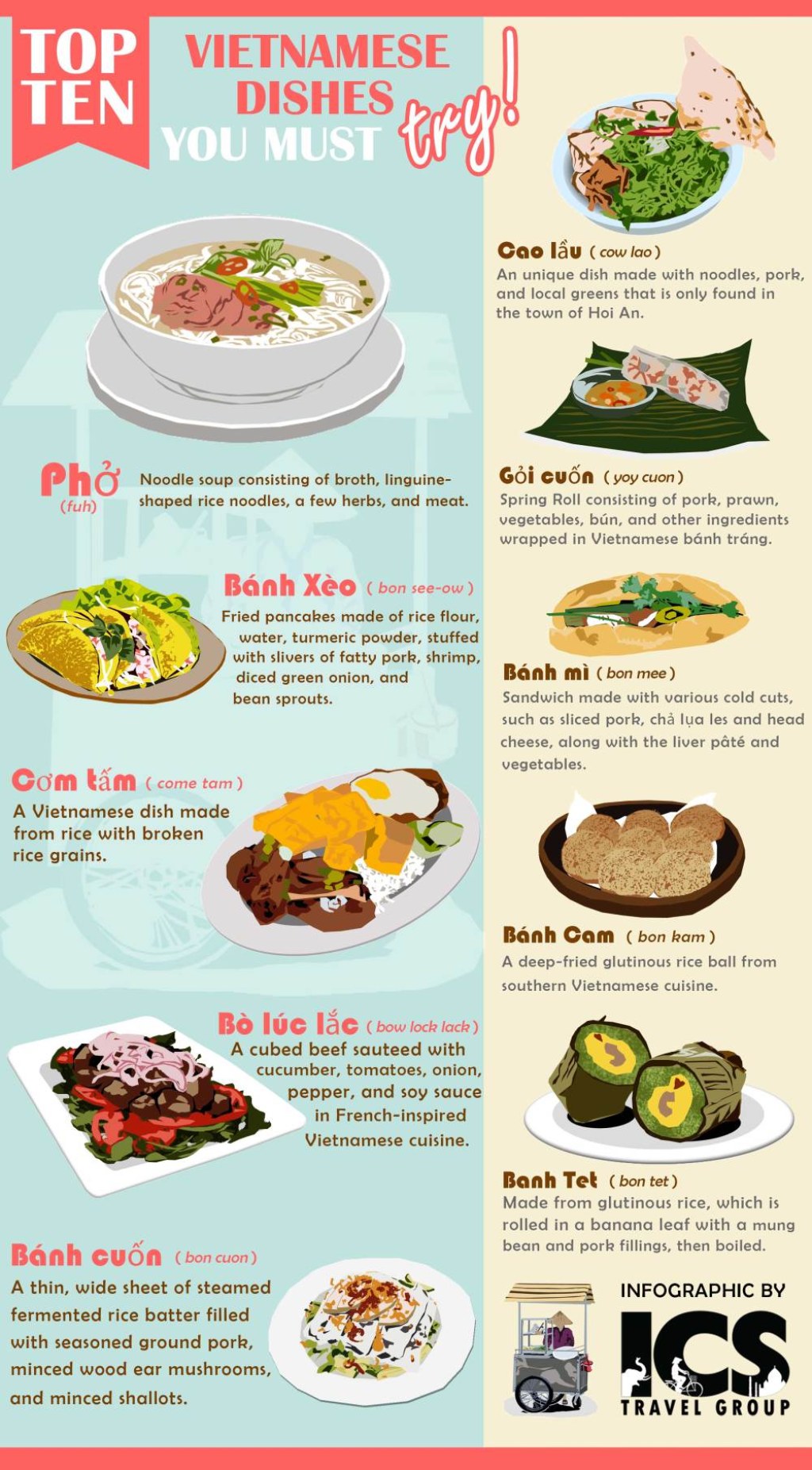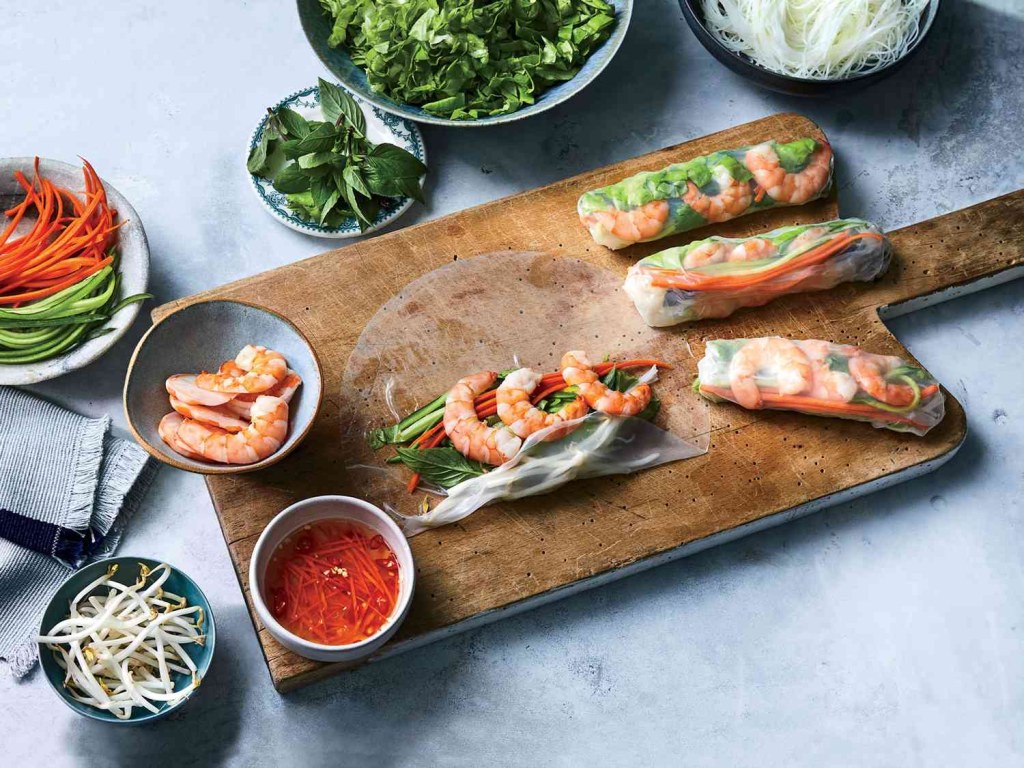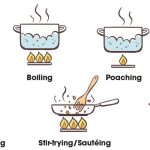Unlock Authentic Vietnamese Cuisine: Master The Art Of Cooking Techniques In Vietnam For Irresistible Flavors!
Cooking Techniques in Vietnam
Introduction
Dear Readers,
2 Picture Gallery: Unlock Authentic Vietnamese Cuisine: Master The Art Of Cooking Techniques In Vietnam For Irresistible Flavors!


Welcome to our article on cooking techniques in Vietnam. In this piece, we will explore the rich culinary traditions of Vietnam and delve into the various cooking methods that make their cuisine so unique and delicious. Whether you are a cooking enthusiast or simply curious about Vietnamese cuisine, this article will provide you with valuable insights and knowledge. So, let’s embark on this culinary journey together and discover the wonderful world of cooking techniques in Vietnam!
Now, let’s jump right into it and explore the fascinating cooking techniques that define Vietnamese cuisine.
Vietnamese Cuisine: A Blend of Tradition and Innovation
🥢 Vietnamese cuisine is known for its delicate balance of flavors, vibrant colors, and the use of fresh ingredients. It is a fusion of traditional Vietnamese cooking methods and influences from neighboring countries such as China and France. The unique combination of herbs, spices, and cooking techniques sets Vietnamese cuisine apart from other Asian cuisines. Let’s unravel the secrets behind these cooking techniques:
1. Stir-frying: The Essence of Vietnamese Cuisine

Image Source: quiethut.com
🌶️ Stir-frying is one of the quintessential cooking techniques in Vietnam. It involves quickly frying small pieces of meat, seafood, or vegetables in a hot pan with a small amount of oil. The high heat and fast cooking process help retain the natural flavors and nutrients of the ingredients. This technique is commonly used in dishes like Pho Xao (stir-fried noodles) and Com Chien (fried rice).
2. Steaming: Preserving the Essence of Ingredients
🍲 Steaming is another popular cooking technique in Vietnamese cuisine, especially for seafood and vegetables. Steaming helps preserve the natural flavors, colors, and nutrients of the ingredients while maintaining their texture and moisture. One famous dish that utilizes this technique is Banh Cuon (steamed rice rolls filled with ground pork or shrimp).
3. Boiling: Creating Fragrant Broths
🍜 Boiling is commonly used in Vietnamese cuisine to create flavorful broths for soups. The slow simmering of bones, herbs, and spices extracts the rich flavors, resulting in aromatic and heartwarming soups like Pho (Vietnamese noodle soup) and Canh Chua (sour soup).
4. Grilling: Infusing Smoky Flavors
🔥 Grilling is a popular cooking technique in Vietnam, adding smoky flavors to various dishes. From grilled meat skewers (Nem Nuong) to grilled fish (Ca Nuong), this technique imparts a delicious charred taste that enhances the overall flavor profile of the dish.
5. Fermentation: Unlocking Umami
🌿 Fermentation plays a crucial role in Vietnamese cuisine, adding depth and complexity to dishes. This technique is used to make fish sauce, shrimp paste, and various pickled vegetables. These fermented ingredients bring out the umami flavors and contribute to the signature taste of Vietnamese dishes.
6. Wrapping: Creating Portable Delights

Image Source: foodandwine.com
🌯 Wrapping is a unique cooking technique in Vietnamese cuisine, where ingredients are wrapped in leaves or rice paper. This technique is commonly used for dishes like Banh Xeo (crispy pancakes) and Nem (spring rolls). It not only enhances the presentation but also allows for a convenient and enjoyable dining experience.
What, Who, When, Where, Why, and How of Cooking Techniques in Vietnam
What: Exploring Vietnamese Cooking Techniques
🥘 Vietnamese cooking techniques encompass a wide range of methods that transform simple ingredients into flavorful and visually appealing dishes. From stir-frying to steaming, each technique adds its unique touch to Vietnamese cuisine. Let’s take a closer look at these techniques:
1. Stir-frying: A quick and efficient way of cooking that retains the natural flavors and textures of ingredients.
2. Steaming: A gentle cooking method that preserves the essence of ingredients while maintaining their freshness.
3. Boiling: Used to create aromatic broths and soups that are the heart and soul of Vietnamese cuisine.
4. Grilling: Adds smoky flavors and charred textures to meats, seafood, and vegetables.
5. Fermentation: Enhances the umami flavors and complexity of dishes through the use of fermented ingredients.
6. Wrapping: Creates portable and visually appealing delights that are enjoyed with every bite.
Who: The Culinary Experts of Vietnam
👩🍳👨🍳 Vietnamese cooking techniques have been mastered and passed down through generations by skilled and passionate chefs, home cooks, and culinary experts. These individuals have dedicated their lives to preserving and innovating traditional Vietnamese cooking methods, ensuring that the country’s culinary heritage continues to thrive.
When: A History Steeped in Tradition
⏰ Vietnamese cooking techniques have evolved over centuries, influenced by various historical events and cultural exchanges. From the early days of Vietnamese civilization to the French colonial period, these techniques have been shaped by the country’s rich history. Today, they continue to evolve as Vietnamese cuisine embraces modern influences.
Where: From Street Stalls to Fine Dining
🍽️ Vietnamese cooking techniques can be found throughout the country, from bustling street stalls to elegant fine dining establishments. Whether you’re exploring the vibrant food markets of Hanoi or indulging in a gourmet meal in Ho Chi Minh City, you’ll encounter these techniques that define Vietnamese cuisine.
Why: The Essence of Vietnamese Flavor
❓ Vietnamese cooking techniques are essential to the country’s cuisine as they capture the essence of Vietnamese flavors. These techniques allow for the harmonious blending of sweet, sour, salty, and spicy flavors, creating a balance that is unique to Vietnamese dishes. The meticulous preparation methods ensure that every bite is a burst of deliciousness.
How: Mastering the Art of Vietnamese Cooking Techniques
👩🍳👨🍳 Mastering Vietnamese cooking techniques requires practice, patience, and a deep appreciation for the ingredients and flavors. By understanding the principles behind each technique and experimenting with different combinations of herbs, spices, and cooking times, one can unlock the secrets of Vietnamese cuisine and create authentic and delightful dishes.
Advantages and Disadvantages of Cooking Techniques in Vietnam
Advantages
1. Retention of Nutrients: Vietnamese cooking techniques, such as steaming and stir-frying, help retain the natural nutrients of ingredients, ensuring that the dishes are not only delicious but also healthy.
2. Balanced Flavors: The careful use of herbs, spices, and cooking techniques in Vietnamese cuisine results in a harmonious balance of flavors, pleasing the palate with every bite.
3. Cultural Heritage: Cooking techniques in Vietnam are deeply rooted in tradition, preserving the country’s culinary heritage and offering a glimpse into its rich history and culture.
4. Versatility: Vietnamese cooking techniques can be applied to a wide range of ingredients, allowing for endless possibilities and culinary creativity.
5. Visual Appeal: The vibrant colors and artistic presentation of Vietnamese dishes, achieved through various cooking techniques, make them visually enticing and a feast for the eyes.
Disadvantages
1. Time-Consuming: Some Vietnamese cooking techniques, such as simmering broths for hours or fermenting ingredients, require time and patience to achieve the desired flavors.
2. Accessibility of Ingredients: Some traditional Vietnamese dishes may require specific ingredients that are not readily available in all regions, making it challenging to replicate the authentic flavors outside of Vietnam.
3. Complexity: Mastering Vietnamese cooking techniques can be challenging, as they often involve intricate steps and precise measurements to achieve the desired flavors.
4. Equipment Requirements: Certain cooking techniques, such as grilling or steaming, may require specific equipment or tools that might not be readily available in all kitchens.
5. Cultural Sensitivity: As with any cuisine, it is essential to approach Vietnamese cooking techniques with cultural sensitivity and respect, ensuring that they are practiced and appreciated in their authentic form.
Frequently Asked Questions (FAQs)
1. Can I substitute fish sauce in Vietnamese recipes?
🐟 While fish sauce is a key ingredient in many Vietnamese dishes, you can substitute it with soy sauce if you have dietary restrictions or allergies. However, note that the flavors may differ slightly.
2. How can I achieve the authentic flavors of Vietnamese dishes at home?
🏡 To achieve the authentic flavors of Vietnamese dishes at home, it is essential to use fresh ingredients, follow traditional recipes, and pay attention to the balance of flavors. Experimenting with different herbs and spices can also enhance the authenticity of your dishes.
3. Are Vietnamese cooking techniques suitable for vegetarian or vegan diets?
🥬 Vietnamese cuisine offers a wide variety of vegetarian and vegan options. Many traditional dishes can be adapted by substituting meat or seafood with tofu, tempeh, or a variety of vegetables.
4. Are Vietnamese cooking techniques difficult to learn for beginners?
👩🍳 Vietnamese cooking techniques can be challenging for beginners due to their intricacy and attention to detail. However, with practice and patience, anyone can learn and master these techniques to create delicious Vietnamese dishes.
5. Can I modify Vietnamese cooking techniques to suit my personal taste preferences?
🌶️ Absolutely! Vietnamese cooking techniques can be modified to suit your personal taste preferences. Feel free to adjust the level of spiciness, sweetness, or sourness according to your liking. Experimenting with different combinations of herbs and spices can also add a unique touch to your dishes.
Conclusion
🍽️ In conclusion, Vietnamese cooking techniques are a testament to the country’s rich culinary heritage and the artistry of its chefs. From stir-frying to steaming, each technique adds its unique touch and contributes to the harmonious blend of flavors that define Vietnamese cuisine. By understanding and practicing these techniques, you can embark on a gastronomic adventure and create authentic Vietnamese dishes in the comfort of your own kitchen. So, don your apron, gather your ingredients, and let the flavors of Vietnam transport you to a culinary paradise!
Final Remarks
📝 The information provided in this article is intended for educational purposes only. While we strive to ensure the accuracy and reliability of the information, we cannot guarantee its completeness or suitability for any specific purpose. Cooking techniques and practices may vary, and it is always advisable to consult professional chefs or reliable sources for guidance. By following the recommendations and suggestions in this article, you acknowledge and accept the risks involved in cooking and the use of cooking techniques. Happy cooking!
This post topic: Cooking Techniques


